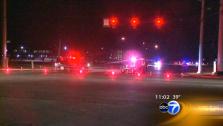  Racial divide runs deep in US schools - Minority students face harsher punishments Wednesday, March 7, 2012 WASHINGTON: Black and Latino students across the United States are far more likely to be suspended than white students - and far less likely to have access to rigorous college-prep courses, according to a sweeping study released yesterday by the US Department of Education's Office of Civil Rights. The trove of data, collected from 72,000 schools serving 85 percent of the nation's students, revealed tremendous disparities in the public school experiences of minority and white students. Some of the most striking findings involved discipline: one in five African-American boys - and one in 10 African-American girls - was suspended from school during the study period, the 2009-10 school year. Overall, African-American students are 3-1/2 times more likely to be suspended or expelled than their white peers. And 70 percent of students arrested or referred to law enforcement for disciplinary infractions are black or Latino, the study found. Other researchers have found that students who are repeatedly punished by being barred from campus are far more likely to drop out. Academic opportunities also vary widely by race. Among high schools that serve predominately Latino and African-American students, just 29 percent offer a calculus class and only 40 percent offer physics. In some school districts, those numbers are even more glaring. In New York City, for instance, just 10 percent of the high schools with the highest black and Latino enrollment offer Algebra II. US Education Secretary Arne Duncan was careful to say that his department is "not alleging overt discrimination in some or all of these cases." But he said he hoped the data would prompt soul-searching as educators across the nation confront inequities. "In the big picture, this is really about self-analysis," Duncan said. He urged teachers and administrators to "look in the mirror, at the good, the bad and the ugly, and figure out what's going on." That may be easier said than done, said Kevin Welner, director of the National Education Policy Center at the University of Colorado at Boulder. The data hint uncomfortably at crude assumptions and enduring stereotypes about "who should be in school, who should be preparing to go to college, who can learn" - and "many of those beliefs stem back from before you or I were born," Welner said. "That's hard to change." Other studies over the decades have found similar racial disparities in student discipline and academic opportunity. But the new report, which Duncan is scheduled to release today in an event at Howard University, is more detailed and comprehensive than most. It breaks down the national data district by district and school by school. And it looks at racial disparities in realms as varied as access to pre-kindergarten programs; success in Advanced Placement courses; and the use of physical restraints on students with disabilities. The release of such wide-ranging data "is very important for is if we're to gain the national will to overcome our aversion to looking at race," said Russell Skiba, who directs the Equity Project at Indiana University's School of Education. "It's tough to talk about race. It's awkward. But this data gives us a bit of a road map." The report, known as the Civil Rights Data Collection, seeks to prod change by calling attention to districts that have used what Duncan called "best practices" to reduce inequities. It points, for instance, to a high school in Montgomery County, Maryland, that serves a largely black and Hispanic population - and enrolls those students in physics at an impressive rate. The report also highlights an elementary school in an impoverished neighborhood of Dade County, Florida that enrolls nearly 17 percent of its black and Hispanic students in a program for gifted students, more than triple the national rate. Duncan said he hoped administrators in other districts would ask how those schools had achieved their success, then follow suit. "There are some encouraging things in this data," he said. "Frankly, there are some very troubling things as well. But the only way forward is to know the truth." - Reuters --------------------------------------------------------------------------------------------- Click Here to compare harsh discipline for Black and Latino students in the largest twenty cities in America and to learn about the worst big city in America for punishing Black students. |



























